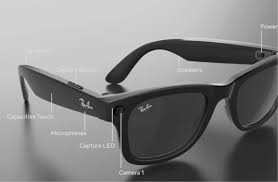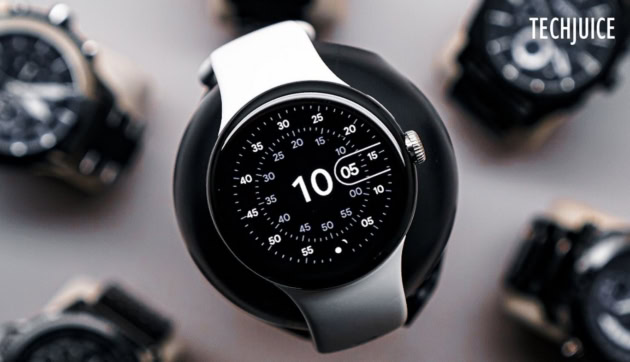Meta’s AI-Powered AR Glasses: A Game-Changer for Multilingual Conversations

Imagine walking through a bustling market in Tokyo, chatting with a vendor who speaks only Japanese, while you hear their words in English through your glasses. That’s the promise of Meta’s AI-powered augmented reality (AR) glasses, slated for a public beta in late 2025. These glasses aim to break down language barriers with real-time translation, making conversations feel natural and effortless. Let’s dive into what makes this technology exciting, how it works, and what it could mean for the future.
What Are Meta’s AR Glasses?
Meta’s AR glasses, developed in partnership with Ray-Ban, are lightweight, stylish eyewear packed with advanced tech. Unlike bulky virtual reality headsets, these glasses look like regular sunglasses but come with built-in cameras, speakers, and microphones. They’re designed to blend into daily life while offering powerful AI features. The standout feature for the 2025 beta is real-time translation for multilingual conversations, powered by Meta’s latest AI model, Llama 3.2.
I once struggled to order food in a small Italian town where no one spoke English. Fumbling with a translation app on my phone was slow and awkward. Meta’s glasses could have made that moment smooth, letting me focus on the conversation instead of my screen. This personal touch is what makes the technology so promising—it’s practical and human-centered.
How the Technology Works
The glasses use Meta’s AI to listen to spoken words in one language, translate them in real time, and deliver the translation through open-ear speakers or as text on a paired phone. For example, if someone speaks Spanish, you’ll hear English in your ear almost instantly. The system supports English, Spanish, French, and Italian at launch, with plans to add more languages later. You can even download language packs for offline use, perfect for travel in areas with spotty internet.
Here’s a quick breakdown of the process:
- Listen: Microphones capture the speaker’s words.
- Process: Llama 3.2 translates the speech in real time.
- Deliver: You hear the translation through the glasses or see it on your phone.
This isn’t just about tech—it’s about making connections easier. Think of students studying abroad or travelers exploring new cultures without the stress of language barriers.
| Feature | How It Works |
|---|---|
| Real-Time Translation | Translates speech instantly using AI. |
| Offline Mode | Downloadable language packs for no-internet use. |
| Audio Output | Open-ear speakers deliver clear translations. |
| Text Display | Shows translated text on a paired phone app. |
Pros:
- Makes conversations across languages feel natural.
- Offline mode is great for travel.
- Stylish design fits into everyday life.
Cons:
- Limited to four languages at launch.
- May struggle with slang or fast speech.
- Requires a phone for full functionality.
Why Real-Time Translation Matters
Language barriers can make travel, work, or even casual chats frustrating. About 20% of the world’s population speaks English, leaving billions who communicate in other languages. Meta’s glasses aim to bridge that gap. Whether you’re negotiating a deal in Paris or asking for directions in Madrid, the ability to understand and be understood in real time is a big deal.
I remember trying to help a Spanish-speaking tourist in New York who was lost. We used hand gestures and broken phrases, but it was a struggle. With these glasses, that moment could have been a real conversation. This tech could make the world feel smaller and more connected, especially for young people who want to explore or study globally.
Current Limitations and Challenges
No tech is perfect, and Meta’s glasses have some hurdles. Early tests show they handle clear, standard speech well but can trip up on slang, accents, or fast-talking. For example, a reviewer testing the glasses in Montreal found that Quebec’s unique French slang confused the AI. Battery life is another concern—real-time translation and AI features drain power, lasting about 30 minutes per session before needing a recharge.
Here’s what to keep in mind:
- Slang and Accents: The AI may miss informal phrases or regional dialects.
- Battery Life: Heavy use requires frequent charging.
- Privacy: Voice data is stored in the cloud by default, though you can delete it manually.
Meta is working on these issues, with plans to improve the AI’s understanding of dialects and extend battery life in future updates. For now, the glasses are best for straightforward conversations in supported languages.
| Challenge | Impact | Meta’s Plan |
|---|---|---|
| Slang/Accents | May mistranslate informal or regional speech. | Improve AI with user feedback. |
| Battery Life | Limited to 30 minutes of heavy AI use. | Optimize power usage in future models. |
| Privacy Concerns | Voice data stored in the cloud. | Offer clearer opt-out options. |
The Bigger Picture: What’s Next for Meta’s AR Glasses?
Meta isn’t stopping at translation. The glasses already support features like object recognition, music streaming, and Instagram messaging. Future updates could include gesture controls or even a small display in the lenses, hinted at by Meta CEO Mark Zuckerberg for a possible 2025 third-generation model. These additions could make the glasses a true all-in-one device, competing with rivals like Google’s upcoming Android XR glasses, which also promise AI-driven translation.
The potential is huge. Imagine students using these glasses to learn languages by practicing with native speakers or travelers exploring remote areas without needing a guide. Posts on X show excitement for this tech, with users like @1auren1o calling the translation feature “fire” for its ease of use. But there’s also skepticism—some worry about privacy or whether the glasses can handle complex conversations.
How It Compares to Other Smart Glasses
Meta isn’t alone in the smart glasses race. Here’s how their AR glasses stack up against competitors:
| Brand | Translation Features | Price | Unique Edge |
|---|---|---|---|
| Meta Ray-Ban | Real-time English, Spanish, French, Italian. | $299–$379 | Stylish design, offline mode. |
| Amazon Echo Frames | Supports 137 languages, low latency. | ~$329 | Wide language support, lightweight. |
| Xiaomi AR Glasses | Alibaba AI-powered, immersive AR experience. | ~$400 | Virtual screen for video streaming. |
Meta’s glasses shine for their style and integration with apps like WhatsApp and Instagram. However, Amazon’s Echo Frames offer more languages, which could appeal to frequent travelers. Xiaomi focuses on AR visuals, which Meta’s glasses don’t yet have. Choosing the right pair depends on whether you value fashion, language variety, or immersive features.
Why This Matters for You
For a 13- to 15-year-old, these glasses could be a game-changer. Imagine studying abroad and understanding your host family’s language instantly or traveling with friends and chatting with locals without a hitch. The glasses make learning and exploring more accessible, turning language barriers into opportunities. They’re not just tech—they’re a tool to connect with people and cultures.
Meta’s public beta in late 2025 will let users test these features and give feedback to improve them. If you’re excited to try them, keep an eye on Meta’s official site for updates on the beta program. For more on how AI is changing wearables, check out TechRadar’s guide to smart glasses. This tech is still growing, but it’s already showing how AI can make our world more open and connected.





